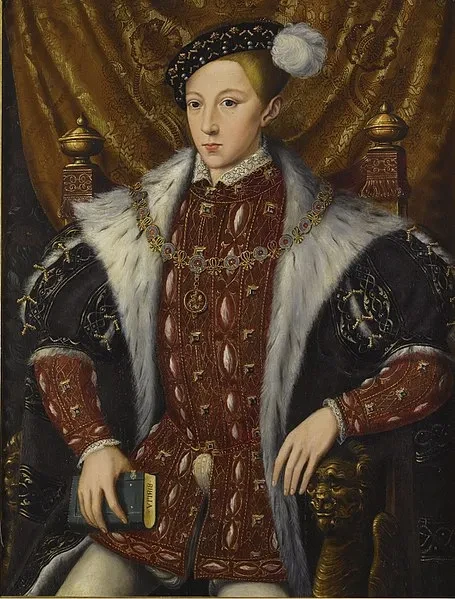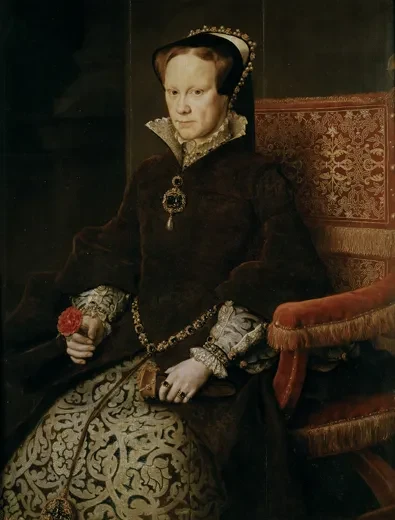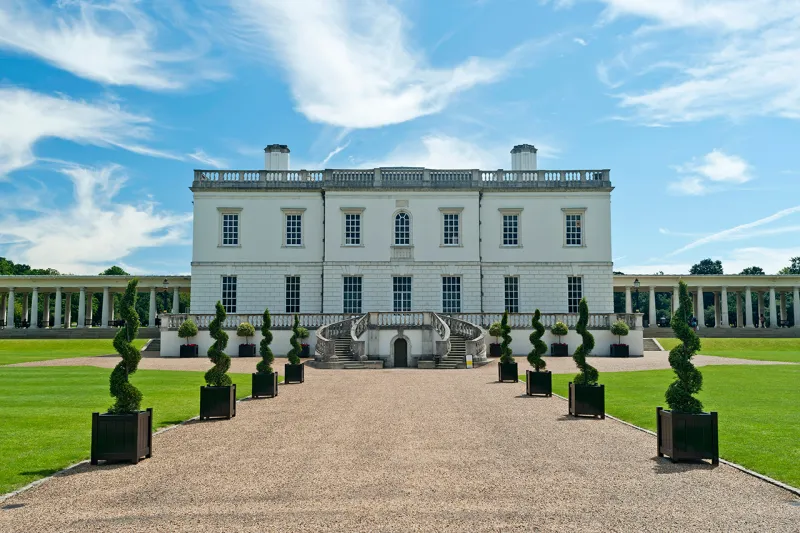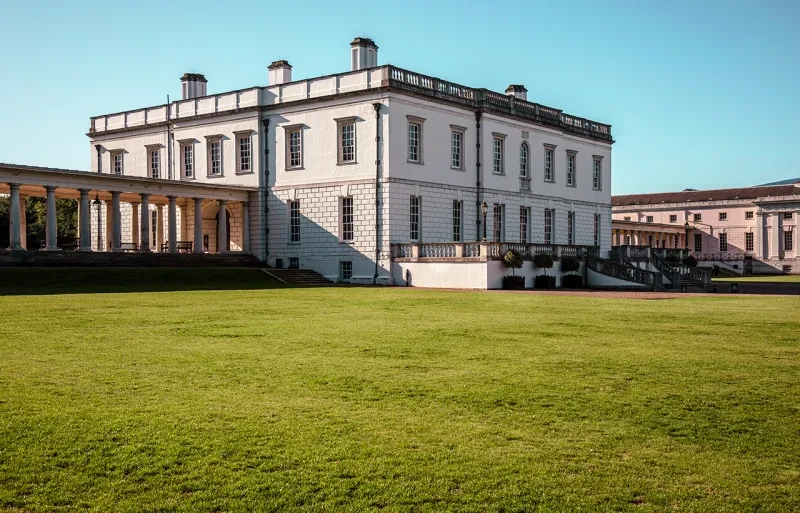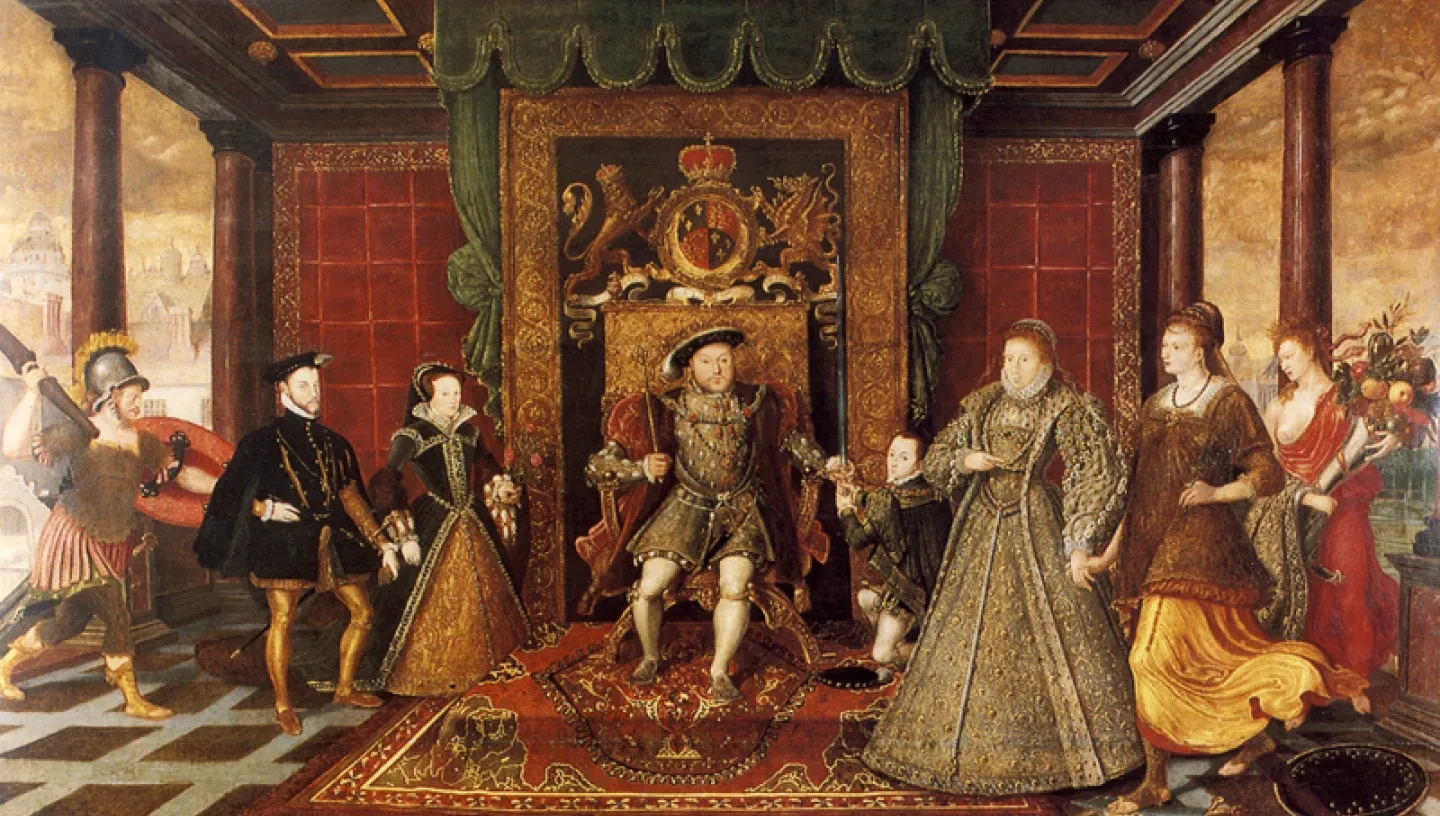
Henry VIII is possibly the most famous King of England, known both for his six wives and for the splitting of the Church.
He had several children from different women, but only three were legitimate and survived past infancy. These were King Edward VI, Queen Mary I and Queen Elizabeth I. Many others were born illegitimately and only one of these was recognised - Henry Fitzroy.
Edward VI
Edward VI, born 12 October 1537, was Henry VIII’s first surviving and only legitimate son and the heir to the throne. Henry VIII described him as 'his most noble and most precious jewel.'
His mother Jane Seymour, Henry VIII’s third wife, died shortly after his birth from postnatal complications. He was crowned King on 20 February 1547, aged just nine, and he reigned for only six years until his death in July 1553, possibly from tuberculosis. Being raised a protestant he continued his father’s work in the reformation of the Church and the removal of Catholicism across Britain.
Due to his young age, the nation was governed by a regency led by Edward VI’s uncle, the Duke of Somerset, until October 1549. The regency was next led by John Dudley, Duke of Northumberland who as the young King aged, worked more with him but still only really allowed the King any control over matters of religion and reformation.
By February 1553, Edward became ill. Fearing that his death would result in Mary I reversing the reformation and taking Britain back to Catholicism, he wrote his ‘devise for succession’. In this, Edward disowned his sisters and outlined his plan to pass the reign to his cousin Lady Jane Grey. He was defeated by his illness on 6 July 1553, aged just 15.
Mary I
Before Queen Mary I, or Mary Tudor, was born, Catherine of Aragon gave the King three sons and a daughter who never survived infancy. Mary Tudor was born 18th February 1516 and was favoured by Henry VIII until her mother Catherine of Aragon was unable to produce a male heir. After the divorce of Catherine of Aragon and the split from the Roman Catholic Church, Mary Tudor fell out of favour and was reduced from a princess to a ‘lady’. She became a focus for Catholic opposition to her brother and his Protestant followers after Henry VIII’s death.
Upon her brother’s death in 1553, she became Queen of England and aggressively fought to reverse the English Reformation and bring back Catholicism. Mary I had her only opposition Lady Jane Grey, the granddaughter of Henry VIII’s sister, beheaded and during her five-year reign burned over 280 religious dissenters, earning her the nickname ‘Bloody Mary’.
After falling ill in May 1558, she died aged 42 on 17 November 1558. Due to no heir being born, the reign of England was passed to her lawful successor and younger sister Queen Elizabeth I.
Elizabeth I
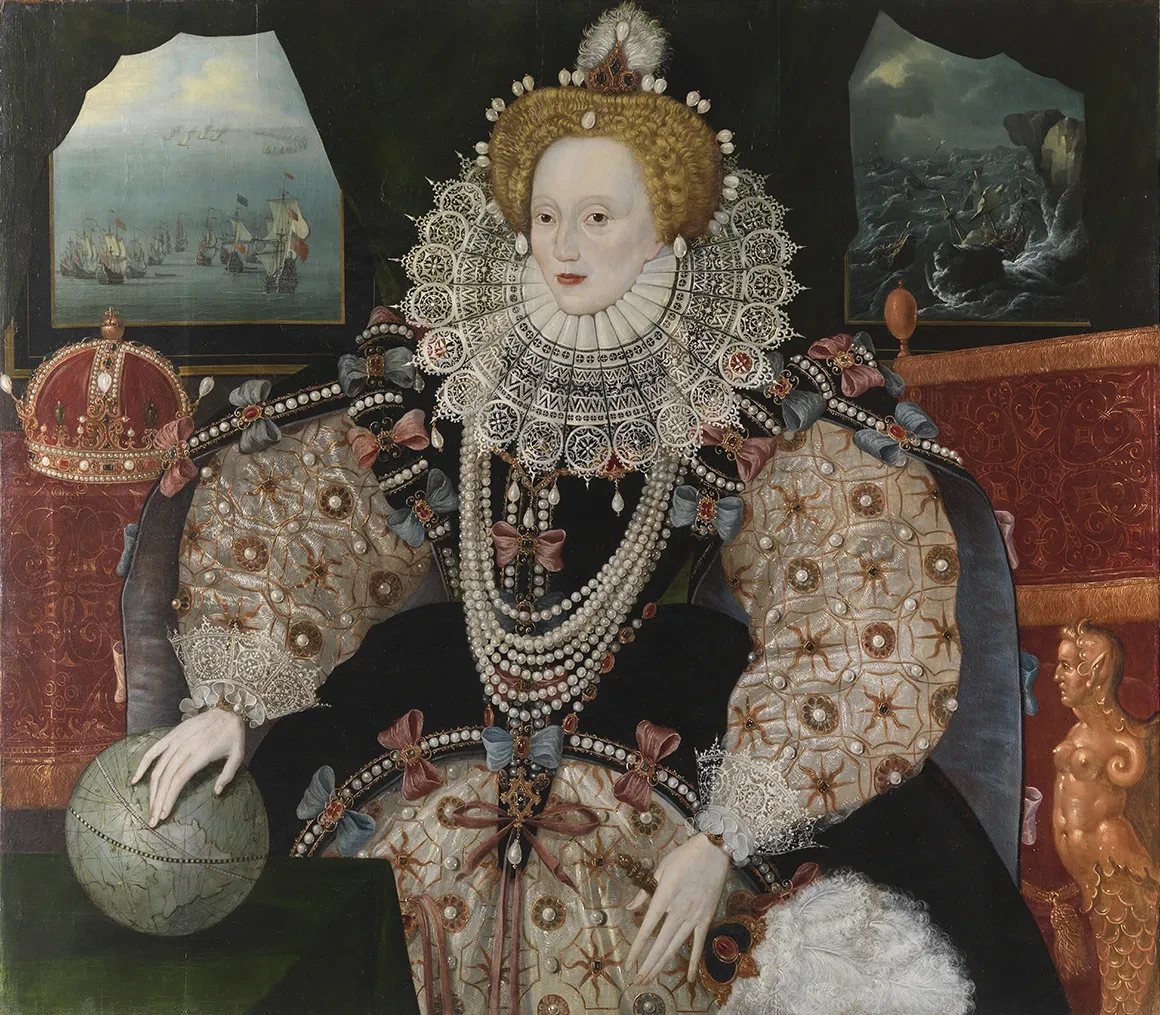
Elizabeth I was born 7 September 1533. Her mother, Anne Boleyn, was Henry VIII’s second wife and was beheaded two and a half years after Elizabeth’s birth. During her sister’s reign, she was imprisoned in the Tower of London for allegedly plotting with the Protestants. She was spared from execution due to her supporters in government. After her sister’s death and lack of an heir, she became Queen on 17 November 1558, aged 25.
In terms of religion, Elizabeth I was more practical and quickly passed laws that moved the country back to Protestantism but were not as strict as her sister or brother's. The nickname ‘The Virgin Queen’ has been since applied to her due to the fact she never married or had any children. While there were many suitors, none of them seemed to be the right fit for her.
Her foreign policy was relatively defensive apart from the actions of her fleets. Francis Drake was knighted after circumnavigating the world and led raids against Spanish ports and fleets, notably the defeat of the Spanish Armada in 1588. Piracy and privateers was a common theme of seafarers ensuring a larger sphere of influence for Britain.
In March 1603, Elizabeth became ill. Following the death of many of her advisors and close friends, she entered a depression and passed away on 24 March 1603, aged 69. Following her death and her refusal to nominate an heir, James I became King of England, unifying the Scottish and English crowns.
Elizabeth's legacy is one of great importance, an era being named after her, the Elizabethan age. She solidified the Protestant Church of England ensuring its position, one which still stands today. Elizabeth I always worked with government and advisors ensuring a rule of popular consent and placing herself in a strong position in the hearts of her subjects.
Henry Fitzroy and Henry VIII's illegitimate children
Henry VIII had many suspected illegitimate children but only acknowledged one, Henry Fitzroy the first Duke of Richmond and Somerset, born 15 June 1519. His mother was Elizabeth Blount, the lady-in-waiting of Catherine of Aragon. He was born in secret and his arrival was unmarked by most of the nation. Henry VIII threw discretion aside and acknowledged his son, giving him the surname Fitzroy, due to his feeling that a lack of a male heir was a slight on his manhood.
Henry Fitzroy was appointed Lord High Admiral of England and Lord President of the council of the North, effectively placing the North under his control. However, throughout Henry VIII’s reign, he was never the successor to the throne. The closest he came to it, it was shortly before his death when Elizabeth I was declared illegitimate, in June 1536. However, he was ill with ‘consumption’, possibly tuberculosis, and died on 23 July 1536, aged 17.
There were many other suspected illegitimate children including Thomas Stukeley, Richard Edwardes, Catherine Carey, Henry Carey, Ethelreda Malte and John Perrot. However, due to none of these ever being acknowledged by Henry VIII, none had any claim to the throne and have never been confirmed as his children.
